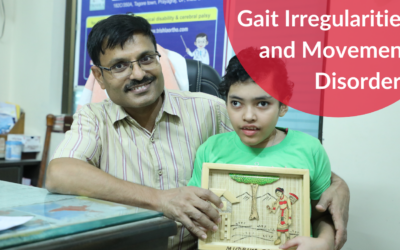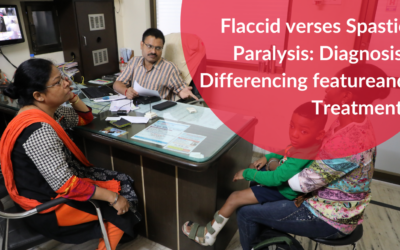Gross Motor Function Classification System (GMFCS)
Releted Posts
Cerebral Palsy
Cerebral Palsy Types
Cerebral Palsy Myths
Cerebral Palsy Surgery In India
Cerebral Palsy Children
Cerebral Palsy Defination
Cerebral Palsy Care Plan
Cerebral Palsy Prognosis
Cerebral Palsy Symptoms
Cerebral Palsy Treatment
Cerebral Palsy Therapy
Cerebral Palsy Organizations
Cerebral Palsy Living Style
Cerebral Palsy Birth Injury
Cerebral Palsy Associated Disorder
Cerebral Palsy Eating Feeding Tips
Cerebral Palsy Sleeping Disorder
Diplegia Spastic Cerebral Palsy
Spastic Cerebral Palsy
Yoga & Physiotherapy
Donate Now
Your one donation can give someone a new life
Gross Motor Function Classification System (GMFCS)
Cerebral palsy (CP) is a neurological condition that affects a person’s ability to control muscle movements, leading to challenges with coordination, balance, and motor function. The severity of motor impairment in children and young individuals with cerebral palsy can vary significantly, which is why clinicians and families need a reliable tool to understand and track motor function over time. One such tool is the Gross Motor Function Classification System (GMFCS), developed by CanChild in Canada. This system classifies the gross motor abilities of children with cerebral palsy into five distinct levels, providing a structured way to assess and predict future mobility needs.
What is the GMFCS?
The GMFCS is used to categorize the gross motor skills of children with cerebral palsy based on their ability to perform basic movements such as sitting, standing, walking, and using mobility aids. By identifying the severity of motor impairments, the GMFCS offers a clear picture of a child’s current abilities and can be instrumental in forecasting their long-term needs, such as the requirement for mobility devices like crutches, walkers, or wheelchairs.
The GMFCS is helpful not only for clinicians but also for families, as it provides guidance on the potential need for equipment or assistive technologies that may be necessary as the child grows. The system is designed to be used for children ranging from infancy (under 2 years of age) to young adults (up to 18 years old), and it remains a reliable & stable tool throughout a child’s life. In general, a child’s GMFCS level is unlikely to improve after the age of 5, meaning that the classification a child receives by this age is typically a reflection of their future mobility needs. For example, if a child is classified at GMFCS Level IV at age 6, they will likely continue to need a mobility device for the rest of their life.
In addition to the classification, GMFCS is also available in multiple languages and offers a Family and Self-Report Questionnaire to further enhance the system’s accessibility and applicability.
The Five Levels of GMFCS
The GMFCS divides motor function into five distinct levels, from mild to severe. Each level describes the child’s ability to perform specific activities and highlights their need for assistance or mobility devices.
Level I: Independent in Most Activities
Children classified under GMFCS Level I are the least affected by motor impairment. These individuals can walk both indoors and outdoors without the need for support, and they are able to climb stairs independently. While they may experience some difficulties with speed, balance, and coordination, they are generally able to run and jump, although at a reduced pace. Children at this level require minimal or no assistance and can perform daily activities with relative ease.
Level II: Limited Mobility and Coordination
Children in GMFCS Level II can also walk indoors and outdoors but need support when climbing stairs, usually by holding onto a railing. They may struggle with uneven surfaces, inclines, or crowded environments, which can affect their balance and mobility. Running and jumping are challenging for children at this level, and they might only be able to perform these activities minimally or with assistance. Although they can move independently, the level of difficulty increases in complex environments, requiring occasional support for mobility.
Level III: Mobility Aids Required
At Gross Motor Function Classification System Level 3, children walk with the aid of assistive devices such as crutches, walkers, or canes, primarily on level surfaces. However, they may still be able to climb stairs with some assistance, typically by using a railing for support. Long distances or uneven surfaces may pose significant challenges, so children in this group may rely on a wheelchair or similar mobility aid for these situations. While they might have some independence, the use of mobility aids is essential for completing everyday tasks and traveling longer distances.
Level IV: Severe Limitations in Mobility
Children at GMFCS Level IV experience significant limitations in their ability to walk, even with assistive devices. Many of these individuals use a cerebral palsy wheelchair most of the time, though some may be able to propel their own power wheelchair. Their movement ability is severely restricted, and they may need help with activities like standing transfers (moving from one seated position to another). While some degree of independence is possible, the need for a wheelchair and other cp assisted walking devices is essential for daily function. These children may be able to perform some activities in a seated position or with support, but their mobility is highly dependent on external aids.
Level V: Complete Dependence on Assistive Devices
At GMFCS Level V, individuals have significant physical impairments that prevent voluntary movement control. These children experience severe difficulties with maintaining head and neck position against gravity and have impairments in all areas of motor function. Sitting or standing independently is not possible, even with adaptive equipment. Children in this category cannot walk, even with the help of mobility devices, but may be able to use powered mobility devices to move. Their ability to engage in physical activities is very limited, and they rely entirely on caregivers for mobility and most other tasks.
Conclusion
The Gross Motor Function Classification System (GMFCS) is a valuable tool in assessing the motor function with cerebral palsy in children. It allows clinicians and families to gain a clear understanding of a child’s motor abilities and to predict future needs for mobility aids. The five levels of the GMFCS range from independent walking (Level I) to complete dependence on assistive devices (Level V). Knowing where a child stands within the GMFCS can help guide decisions regarding equipment, therapy, and long-term care. While the classification typically remains stable after the age of 5, it provides a framework for managing expectations and planning for the future, ensuring that children with cerebral palsy receive the appropriate support and care throughout their lives.
Watch Our Success Stories
Cerebral palsy is a lifelong condition that affects individuals from infancy, presenting multiple challenges. As a parent & specialist, it's essential to have comprehensive information to navigate this journey.
Subscribe to our YouTube channel to access: Educational videos, Real-life case reports, Inspiring success stories
Stay informed, stay empowered!
Page Medically Reviewed and Edited by
DR. Jitendra Kumar Jain
Dr. Jitendra Kumar Jain is a renowned name in the field of childhood physical disability & orthopedics problems in North India. He has been an MS Orthopedics, DNB Orthopedics, Pediatric orthopedic surgeon & cerebral palsy specialist for over 21 years.


Page Medically Reviewed and Edited by DR. JITENDRA KUMAR JAIN
Dr. Jitendra Kumar Jain is a renowned name in the field of childhood physical disability & orthopedics problems in North India. He has been an MS Orthopedics, DNB Orthopedics, Pediatric orthopedic surgeon & cerebral palsy specialist for over 21 years.
Testimonials
Make a Difference
Support Trishla Foundation's Life-Changing Work for Children with Cerebral Palsy!
Together, we can break barriers and empower children with cerebral palsy. With your generous contribution, Trishla Foundation can continue its vital work in providing therapies, education, and support to these incredible children. Help us create a brighter future by donating today!



